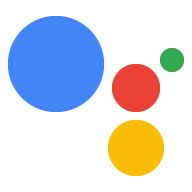بیش از 500 میلیون نفر در ماه کارها را با Google Assistant در دستگاه های خود انجام می دهند و همچنین می خواهند سرگرم شوند. شروع یک بازی به همین سادگی است که بگوییم "بیا بازی کنیم!" می توانید به بازیکنان و مخاطبان جدید بیشتری دسترسی پیدا کنید.
بیاموزید که چگونه پلتفرم Google Assistant بیش از گیمرهای معمولی شما را شامل می شود و چگونه نمایشگرهای هوشمند می توانند به شما کمک کنند بازیکنان جدیدی را به بازی خود جذب کنید.
"Hey Google، اجازه دهید یک بازی انجام دهیم"
شروع یک بازی با Google Assistant بسیار ساده است. برخلاف سایر پلتفرمهای بازی که به کنترلرها و سطح تجربه بازی نیاز دارند، هر کسی میتواند یک بازی را روی Assistant انجام دهد. در نظر بگیرید که چگونه این امکان را برای مخاطبان جدید بازی، مانند بازیکنان جوان در خانه باز می کند.
سادگی و قدرت رابطهای گفتاری این امکان را برای تقریباً هرکسی فراهم میکند که بازی شما را بفهمد و بازی کند و به شما این امکان را میدهد که بازی را به روشهایی تغییر دهید که در سایر پلتفرمها امکانپذیر نیست. بازی های بی اهمیت یا ماجراجویی را در نظر بگیرید که در آن کل خانواده می توانند در آن شرکت کنند، با تغییر پیچیدگی مورد نیاز از پاسخ های بازیکنان. به عنوان مثال، در طول نوبت به بازیکنان جوان، انتخاب های خاصی برای بازی ماجراجویی خود ارائه دهید و از بازیکنان مسن تر بخواهید که حرکت بعدی خود را توضیح دهند.
طراحی برای بازی گروهی
نمایشگرهای هوشمند اغلب در مکان های مشترک مانند آشپزخانه یا اتاق خانواده قرار می گیرند. بنابراین اگر یک بازیکن در حال تعامل با بازی شما باشد، احتمالا افراد بیشتری مکالمه را می شنوند. این به این معنی است که شما این فرصت را دارید که جمعیت زیادی را به بازی خود بکشانید. با در نظر گرفتن این مدل تعامل، این عوامل را هنگام طراحی بازی خود در نظر بگیرید:
- طراحی برای جمعیت: بازی خود را با این ایده بسازید که بیش از یک بازیکن می توانند در یک زمان شرکت کنند. در اتاقی که چند نفر اشغال میکنند، اگر افراد بیشتری میخواهند به آن بپیوندند، گزینههای چند نفره را در نظر بگیرید. بازیکنان جدید را در فواصل زمانی مناسب یا وقفه در بازیهای منظم دعوت کنید. دعوتنامهها را تکرار کنید تا بازیکنان بالقوهای را که پس از شروع بازی به اتاق میآیند، اضافه کنید.
- چندین فعالیت در حال انجام : مناطق اشتراکی اغلب مملو از فعالیت هستند. در نظر بگیرید که چگونه این فعالیتها میتوانند بر توانایی بازیکنان برای پاسخدهی تأثیر بگذارند، مثلاً شخصی که سبزیجات را میبرد و نمیتواند دستش را لمس کند. همچنین، به دنبال راه هایی برای گنجاندن آن فعالیت ها در بازی خود باشید.
- صدای محیط: در نظر بگیرید که محیط بازی چقدر ساکت یا پر سر و صدا است. برای مثال، آشپزخانهها و اتاقهای نشیمن میتوانند صدای بلندی داشته باشند و دستگاه ممکن است مکالمات دیگری را دریافت کند. با اجرای مدیریت خطای قوی، برای نویز برنامه ریزی کنید. برای اطلاعات بیشتر، خطاها در سایت طراحی مکالمه گوگل را ببینید.
زمان پخش را افزایش دهید
اگر بازیهایی را برای پلتفرمهای دیگر طراحی کردهاید، ممکن است انتظار حداقل زمان جلسه مورد نیاز برای یک تعامل موفق بازی را داشته باشید. در طراحی بازی برای Google Assistant، باید انتظار مدت زمان جلسات کوتاه تری را داشته باشید و ممکن است لازم باشد در تعریف خود از حداقل طول جلسه تجدید نظر کنید.
بهعنوان یک پلتفرم با قابلیت صوتی و همیشه در دسترس، زمان بازی در Google Assistant میتواند با چند کلمه از یک بازیکن شروع شود و به همان سرعت به پایان برسد. این سهولت ورود به بازی، امکانات بیشتری را برای زمان و مدت زمانی که بازیکنان شما می توانند در یک بازی شرکت کنند ایجاد می کند. در نظر بگیرید که بازیکنان می توانند به عنوان بخشی از فعالیت های دیگر، مانند دریافت به روز رسانی ماموریت در حین پختن شام، یا در جلسات سریع، مانند بررسی یک حیوان خانگی مجازی در حالی که در اتاق نشیمن قدم می زنند، بازی کنند.
مدل تعامل سریع و ساده ارائه شده توسط پلتفرم Google Assistant فرصت هایی را برای تعاملات معمولی در بازی ایجاد می کند. بازیکنان میتوانند جلسات کوتاه زیادی در طول روز داشته باشند، بازیهای پسزمینه را که به موازات سایر فعالیتها انجام میشود، امکانپذیر میکنند، امکانی که برای اکثر پلتفرمهای بازی غیرعملی است.

